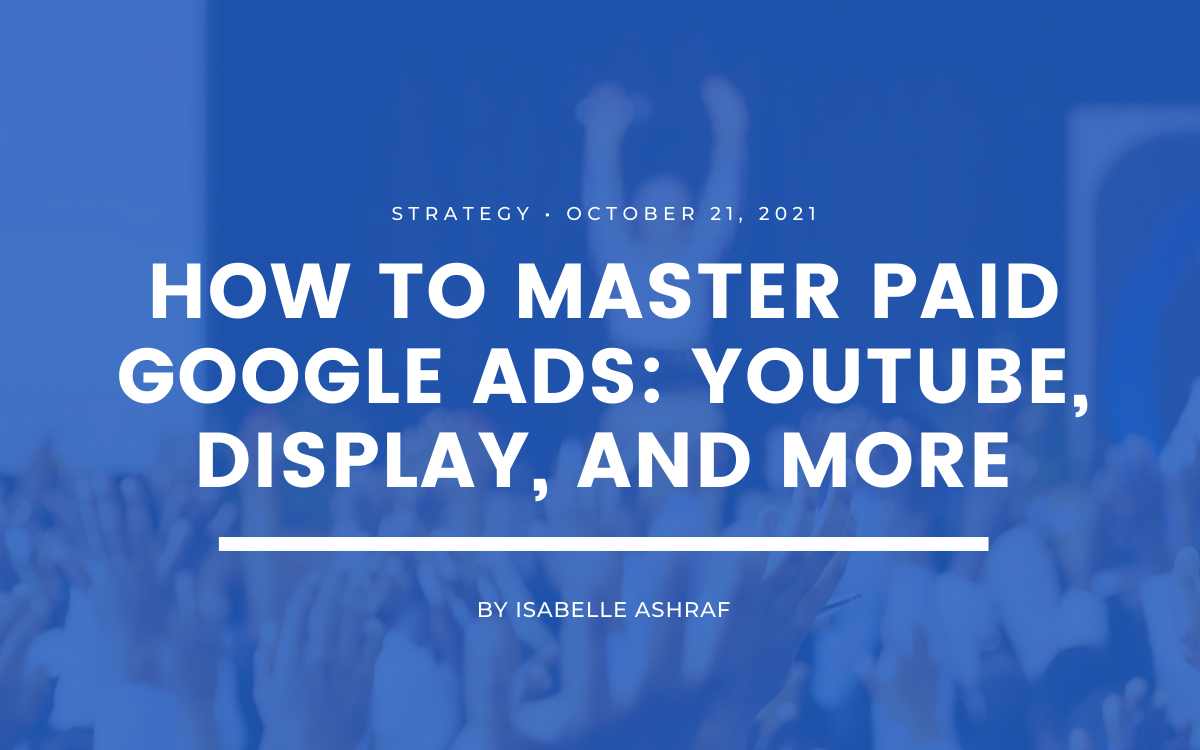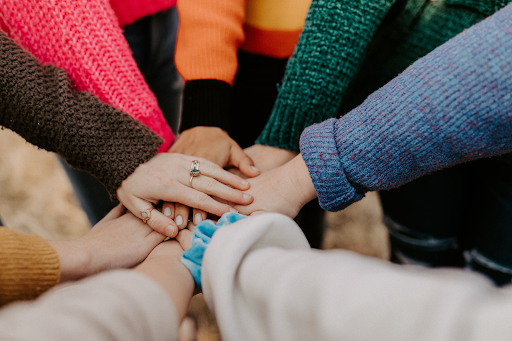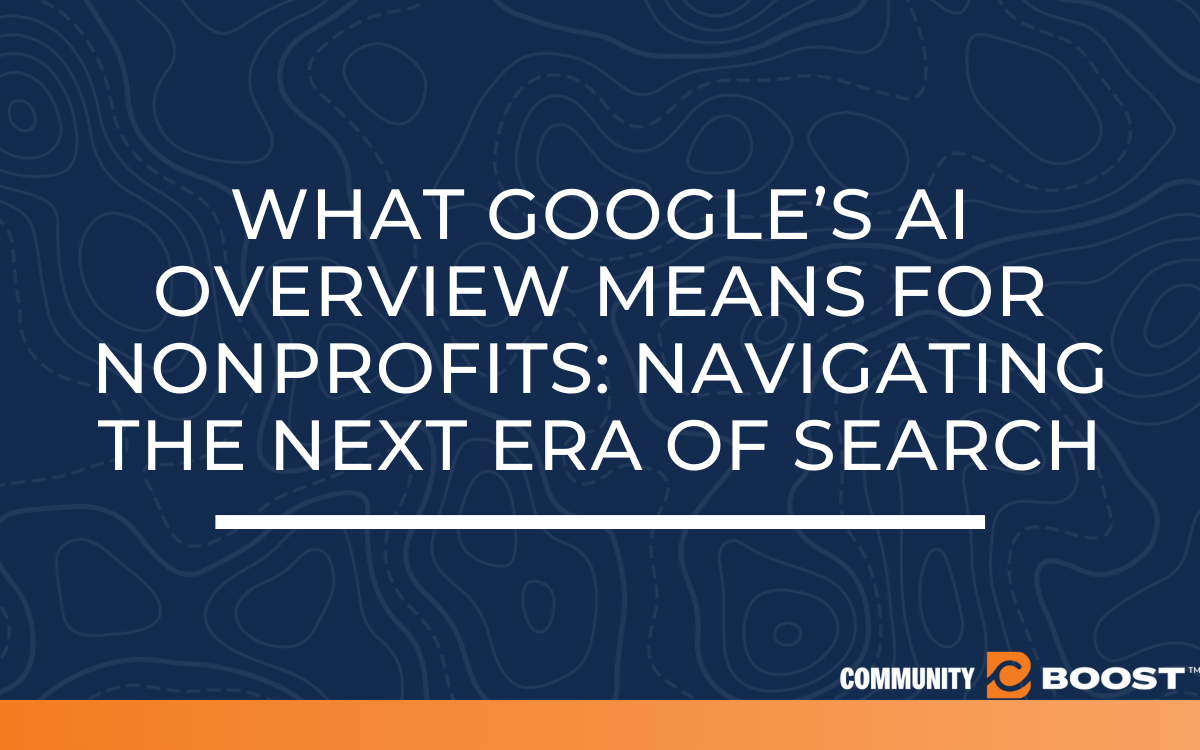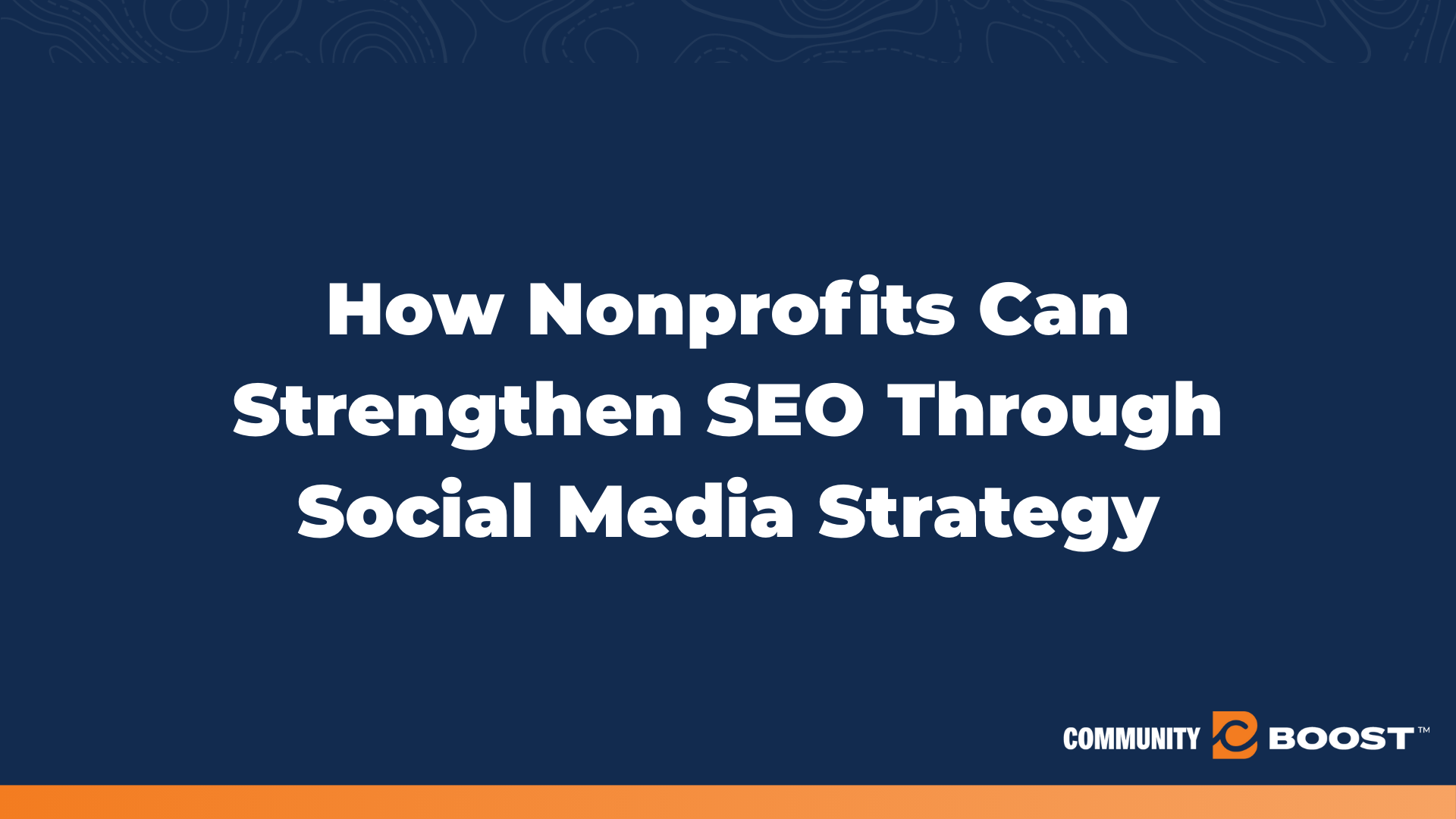How to Master Paid Google Ads: Youtube, Display, and More
9 min to read ✭ Learn the most effective ways to utilize Paid Google Ads including YouTube and Display with best practices and advanced tactics to increase online donations.
Paid Google Ads is the connection between supporters searching for information about the organizations they are passionate about and the charities that are working every day to create the impact. It is mind-blowing to see how something so massive, like Google, can be the binding factor between donors and the charities they support.
You might be wondering what Youtube ads and Display ads are, and how they can be utilized as a part of your paid Google ads strategy. We’re going to explain all of this, plus how to generate new donor awareness with these channels and why these channels are so important, especially in the marketing funnel.
So let’s take a step back really quickly and talk about the common digital marketing funnel. How do Paid Google Ads fit into this funnel?
How Google Ads Fits Into the Marketing Funnel
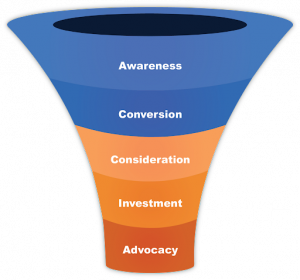
At the top of the funnel, we have a new website visitor who may have never heard of the organization before, but found the site organically with no connection to the brand. Moving down the funnel to conversion, this may be someone who is a new email subscriber who then “considers” or enrolls in the mission to share value. At investment, this person may have made their first donation or purchase from the organization. Ultimately we want to get people to the point of advocating for the brand, becoming repeat donors, and getting others involved in the mission as well.
The Google Ad Grant, as you may know, is $10,000 a month that Google gives nonprofits to spend on Google search ads. So this $10,000 a month is an amazing opportunity to test as much as you can, get as much traffic as you can, and work on that brand awareness at the top of the funnel.
With paid search, we know it is more profitable with higher conversion rates than the Ad Grant which is why we suggest doing this in conjunction with Google ads. The Google Ad Grant is at a lower priority in what we call a second auction. With paid search, you are spending money directly into those channels to get higher impression rates.
Display ads are image ads, usually displayed as an image on Google’s display network. These ads are used for remarketing to the people who are aware of your organization but have not yet converted or enrolled in your mission. Display ads follow people around the web with an image or text that directly targets them based on past searches.
Lastly, we have YouTube video ads. These are often overlooked in the part they play in targeting people who have shown previous interest in certain subjects and show a connection to the topics that your nonprofit is talking about. All of these channels are truly stronger together and build a robust funnel, especially at the top where we’re trying to reach people who might not know about the brand.
The Power of Paid Search, Display, and YouTube
Let’s talk about the power of these channels. There are 4 billion internet users worldwide, 8 billion connected devices, 5.6 billion searches on Google every single day, and 13% of those being new searches…crazy right? And these numbers are only increasing. Just think about how many times you go to Google in a day to ask a question, look something up, or find a website. After all, people are 7x more likely to convert or visit your site from search than from social media.
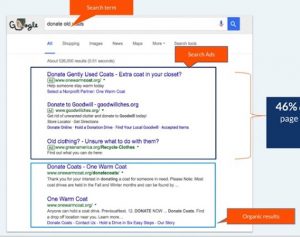
What’s powerful about search ads is that you’re not just reaching out cold to random people, there is some intent behind their own search. This is a powerful group to capture into the funnel. If somebody searches by typing in their own words into the search bar, the top three ads they see are actually the search ads that you’re paying for, which are pretty discreet to others but target them directly. At the very bottom of the search page, you have organic search which represents SEO. For instance, creating specific content and constantly optimizing to develop a strong chance of showing up on search pages – aka SEO. SEO is very important and plays into how many impressions you’re going to get in your search ad results. 46% of people actually click on that first page of the results, which proves that people trust Google and believe it is going to show them relevant information.
Now, display reaches over 90% of internet users through the 2 million website placements on the display ads network. It’s basically a catalog of 2 million different websites that you can put a flyer on in different ways. You see these more than you think and they are pretty much on every site you visit. By using Display ads, you have the potential to reach a ton of websites at a very affordable cost. Some ads cost as low as one cent, which makes this a very affordable platform.
One of my favorite channels is actually YouTube because of the visual aspect and the impact that it makes. There are 2 billion YouTube users worldwide making it the second-largest search platform in the world. People are using YouTube to learn all sorts of things like how to take a stain out of your shirt or how to make an apple pie.
Together, YouTube and Display help to refine your targeting to highly engaged users. With these channels, you are able to create custom audiences and placement targeting to find your ideal persona. This can be done by entering search terms that would be relevant to competitor URLs. Google’s AI is evolving every day and is really good at finding users based on the information that we provide about search terms, what people are looking to buy, and the sites we want to be appearing on.
Recently, Google has released a customer match list to be available to more accounts. This is pretty remarkable, especially for nonprofits with smaller budgets. Prior to this, customer match lists were pretty exclusive to accounts that were spending thousands and thousands of dollars every month. Luckily, this is becoming more available to smaller nonprofits like yours.
Paid Ads Case Study: Southern Environmental Law Center
The mission of Southern Environmental Law Center is to protect the basic right to clean air, clean water, and a livable climate; to preserve our region’s natural treasures and rich biodiversity, and to provide a healthy environment for all. They partnered with us to use Paid Google Ads to build brand awareness, increase the listenership for their podcast, and generate donations.
Our strategy to drive awareness was to use display ads to generate thousands of impressions in a very targeted area with a targeted audience. We used personal information to specifically target people that would potentially be interested in supporting and advocating for issues related to this organization’s mission.
With Youtube ads, we used a format that allows the user to skip the ad after five seconds. If they choose to skip the ad, we don’t pay anything for them to see it. However, within five seconds we can deliver our brand by hooking the viewer and sharing our story. Once the viewer has been watching for 30 seconds, we would pay for that advertising, but it would be worth it because we have now created a remarketing audience with that person in it. In this instance, we created a 30,000+ remarketing audience in less than 9 months.
Let’s connect this back to the Google Ad Grant. The goal was to educate people about their brand, and the issues that they’re advocating for. We’re then targeting their brand name with the keywords around those environmental rights issues in our Ad Grant account. If someone chooses to search the brand or more about the subject, our ads are able to then drive them to the site. This means we can use the Ad Grant to remarket to them again because it’s a targeted area.
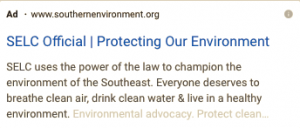
The results? By using keywords that ranged from branded to general awareness to specific conversion intent, utilizing Responsive Search Ads, and by running both English & Spanish ads, SELC was able to generate:
$37,455 Ad Grant spent, 8,125 clicks, 38 donations, $20,447 donation value, and 112 outbound clicks to the podcast.
Our Recommended Strategies for Each Channel
What are the paths and tangible recommendations for applying these channels to your strategy?
Google Ad Grant
We can’t emphasize this channel enough. It is $10,000 of free Google search ad spend to use every single month and it’s an amazing opportunity to reach more people and build more awareness. The biggest opportunity for using this $10,000 a month is to test and experiment as much as you want. You can test things like landing pages, keywords, click-through rate, copywriting, search impressions, and more. This information is all included in the Google Ad Grant platform.
Paid Search
From here you will bring all of that data into paid search. Let’s just say we are bidding on the keyword “volunteering abroad.” We have a search ad for that, and it’s producing a high conversion rate for us. Let’s pull that ad and those keywords into a paid account. This will give us the ability to win even more impression shares because we’re at the first level of the auction. We’re then able to lower our cost per acquisition by being really specific with the different keyword match types in our bidding strategy.
The other opportunity with paid search is targeting competitor keywords. So, targeting alike nonprofits that people might be searching for, targeting their brand name, and showing up next to them is a great way to build brand awareness.
YouTube
As mentioned previously, with YouTube Ads you are able to capture new remarketing audiences and build brand awareness with a small budget. If a viewer only watches 5 seconds of your video ad, the least you are getting is brand awareness without paying for it. If they watch the 30-second video, you can use that to remarket and pull the highly engaged user in. Those short impressions have value because maybe the same person that watched only 4 seconds will see the video again, remember it, and watch further the second time. This would give you an added remarketed audience member. We suggest having your ads shown on news channels or local news channels because they tend to have a lot of search traffic.
Display

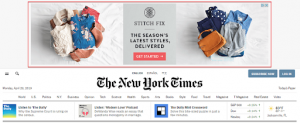
Your responsive display ads are even more adaptable because they use a lot more AI to understand who the user is, when they’re most likely to look at your ad, and when they’re most likely to click on it. Use this data to provide images and text that lead to higher conversion rates and click-through rates. Keep in mind that Display is an awareness channel as you create these ads and target audiences.
The Winning Formula
Building diverse and complex funnels is important to cultivate relationships with new donors and new volunteers. YouTube ads and Display ads can be used to pull on those heartstrings, tell your story, and keep your nonprofit top of mind. Using consistent language between Display ads, YouTube ads, Google Ad Grant search ads, and paid search ads pull people through the funnel and if we can invest in all four of those platforms, we can have some consistent branding and tell a clear story.
Take advantage of the low-cost channels like YouTube and Display, and make sure you invest in growing new donors well before year-end. Be sure to use those YouTube remarketing audiences to communicate your impact early. Finally, use paid search and the Ad Grant to your advantage by providing text that works the best to lead to higher conversion rates and click-through rates.


